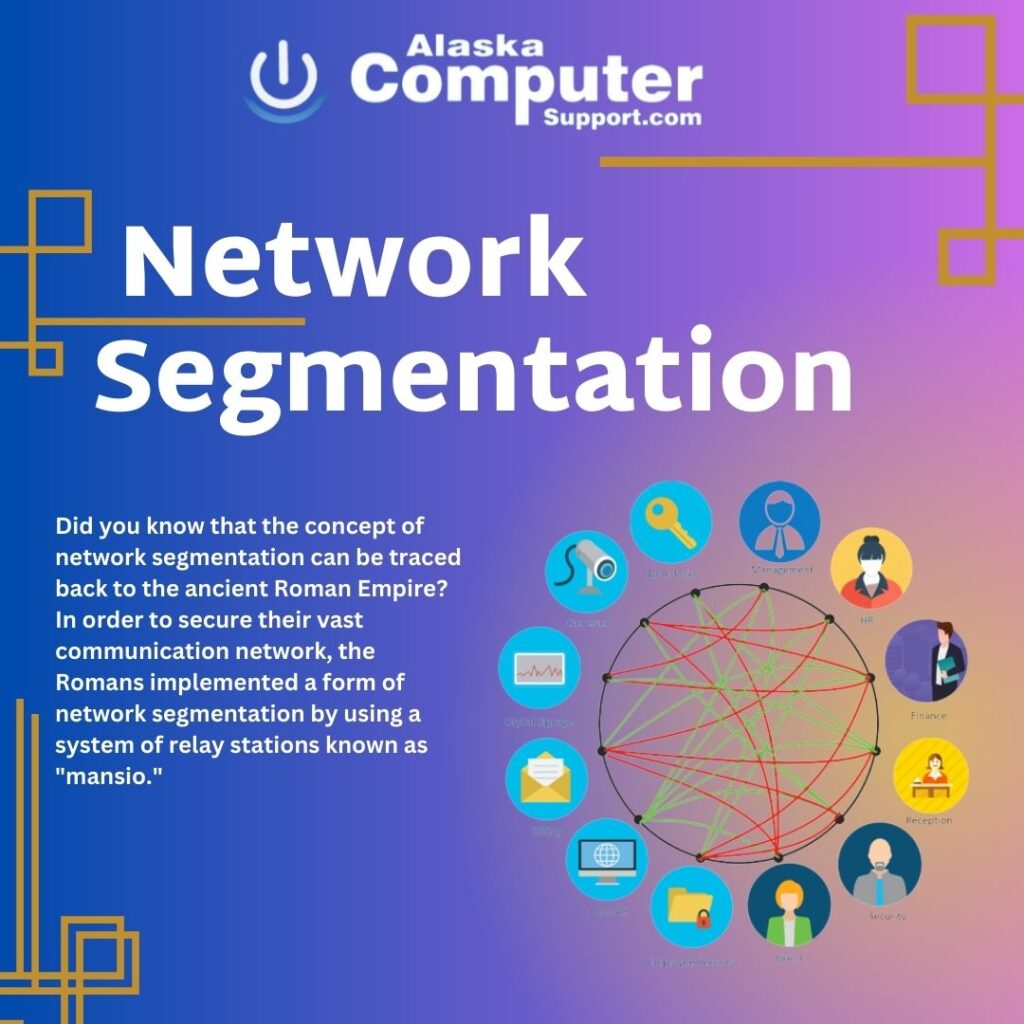The Importance of Network Segmentation

Introduction
In today’s interconnected world, network security has become a paramount concern for businesses of all sizes. One crucial strategy for securing network infrastructure is network segmentation. Network segmentation involves dividing a network into smaller, isolated segments to control and restrict access between them. By implementing network segmentation, organizations can significantly enhance their security posture and protect sensitive data from unauthorized access.
Benefits of Network Segmentation
Network segmentation offers a multitude of benefits that go beyond basic security measures. Firstly, it enhances overall security by creating barriers between different network segments, making it difficult for malicious actors to move laterally within the network. Even if one segment is compromised, the attacker’s ability to access other segments is limited, reducing the overall impact of a breach.
Furthermore, network segmentation aids in containing threats. By isolating sensitive systems or critical assets, any potential compromise or breach can be contained within a specific segment, minimizing the risk of spreading to the entire network. This containment also reduces the time and effort required for incident response and remediation.
Improved network performance is another advantage of network segmentation. By separating network traffic into logical segments, organizations can allocate network resources more efficiently, minimizing congestion and latency issues. This leads to faster and more reliable communication between devices and applications.
Network Segmentation Strategies
There are various strategies for implementing network segmentation, each suited to different organizational needs. Physical segmentation involves physically separating network segments using separate switches, routers, or firewalls. This strategy is effective for high-security environments where absolute isolation is required.
Virtual segmentation, on the other hand, leverages virtualization technologies to create logical segments within a shared physical network infrastructure. This approach offers flexibility and scalability while still maintaining isolation between segments.
VLANs (Virtual Local Area Networks) are a popular form of virtual segmentation that enables the creation of multiple logical networks within a single physical network infrastructure. VLANs provide segmentation based on network membership, allowing organizations to separate departments or groups within their network.
Best Practices for Implementing Network Segmentation
To ensure the successful implementation of network segmentation, organizations should follow some best practices. First and foremost, conducting a thorough network assessment is crucial. This assessment helps identify critical assets, vulnerabilities, and potential areas of weakness that need to be addressed during segmentation.
Once the assessment is complete, organizations should focus on identifying critical assets and data that require enhanced protection. By prioritizing these assets, organizations can allocate appropriate resources and design robust segmentation strategies around them.
Creating logical segmentation zones is essential for effective network segmentation. Organizations should define the boundaries of each segment based on factors like sensitivity of data, user roles, or functional requirements. These zones help enforce access controls and ensure proper isolation between segments.
Challenges and Considerations
Implementing network segmentation may pose certain challenges and require careful considerations to ensure its effectiveness and seamless integration within an organization’s infrastructure.
One challenge is the impact on network complexity. Network segmentation can introduce additional complexity, especially when dealing with a large-scale network or multiple interconnected systems. Proper planning and documentation are essential to manage the increased complexity effectively. Organizations should consider leveraging network management tools or seeking expert guidance to streamline the segmentation process and minimize complexity-related issues.
During the implementation phase, there is a potential for disruption to regular network operations. Introducing segmentation may require temporary downtime or network reconfiguration, which can impact business continuity. It is crucial to plan for these potential disruptions and schedule implementation during periods of minimal operational impact, such as maintenance windows or non-peak hours. Communication with stakeholders and end-users about the planned disruptions and their duration is vital to manage expectations and minimize any negative impact.
Real-World Examples
Real-world examples provide valuable insights into the benefits and potential pitfalls of network segmentation.
In Case Study 1, Company X successfully implemented network segmentation across its organization. By carefully assessing their network infrastructure, identifying critical assets, and implementing logical segmentation zones, they were able to improve security significantly. The segmentation allowed them to isolate critical systems, effectively control access, and limit the impact of potential breaches. As a result, Company X experienced a noticeable decrease in security incidents and better compliance with industry regulations.
On the other hand, Case Study 2 highlights the consequences of a network breach resulting from a lack of segmentation. Company Y, a prominent organization, suffered a significant data breach that compromised sensitive customer information. The absence of proper segmentation enabled the attacker to move freely across the network, accessing critical systems and exfiltrating data. This case study underscores the importance of implementing network segmentation as a fundamental security measure to prevent or mitigate the impact of such breaches.
